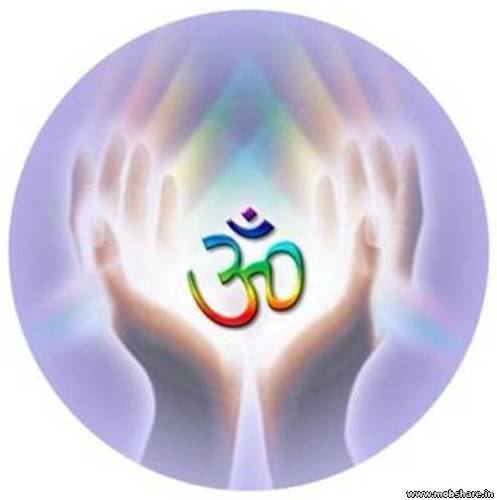Tuesday, March 22, 2011
Islamabad : A core ideology of Indian Islam was developed after the Muslim conquest of most of the subcontinent. The core of this ideology was extreme conservative Sunni Islam mingled with traditions from Afghanistan and Central Asia. After interfacing with Indian society, the caste system was also appended to it. This core ideology prevailed during the entire Muslim rule in the subcontinent and later on proliferated into extremist versions in Pakistan and retrogressive tendencies in India.
In line with the general ethos of that period, Muslim invasions were quite brutal. The killing of enemies, including common Indian citizens, particularly males, was the norm. Looting personal property and plundering temples for gold, silver and other precious artefacts was considered to be the prime prize for invading conquerors. Incidentally, the Hindu rulers who conquered each other were no different — they used to rob temples in the enemy territory for the same reason.
The Muslim addendum was to take the conquered population as slaves and sell them in well-established slave markets — Ghazni and later on Lahore became very large slave markets. Slavery may have been practiced in India in some shape or form before the Muslim conquests but there were no established markets where human beings were bought and sold. At that time this was considered justified by Islam because most of the conquerors (the whole Slave Dynasty) had been bought slaves themselves. Therefore, the enslavement of other humans was also part of the core ideology of Muslim conquerors.
Court historians of Muslim Indian rulers exaggerated and created a mythology about their masters’ power of destruction, loot and plunder. Every historian wanted to portray his master as the great ‘destroyer of paganism’ in fictional stories. For example, Pamela Thapar, the famous Indian historian, has proved, after scrutinising all the old scripts, that Somnath temple must have been a very minor one and, most probably, Mahmood Ghaznavi never reached it. But, Muslim historians project it as a major Hindu centre from where so much gold was looted that it had to be carried to Ghazni on hundreds of camels and horses. Where would these tons of gold have come when the population of that area was small and quite poor? Such fictional history also suited the Indian nationalists to show Muslim plundering and, therefore, they did not challenge it. In any case, fictional conquests were also incorporated into core Indian Muslim ideology, which has remained operative even in our times.
The inferiority of women was also part of the core ideology of Muslim invaders who came from Afghanistan and Central Asia. Abû Rayân al-Bîrûnî, in his famous book Tareekh Al-Hind, gives a list of ways the Indians differ from Muslim invaders. He observes that Indian men always consulted their wives in important matters while the newcomers feel it below their manly pride to take advice from women. The concept of inferiority was an important element of the core Indian Muslim ruling elite ideology and is still alive and well: the Taliban are just resurrecting what was always part of the essential invading Muslim mindset.
After the lower layers of indigenous Hindus started converting to Islam, the Muslim rulers supplemented their core ideology with traditional Indian caste practices. They kept treating the converted Muslims as they had been treated by upper caste Hindus before. In fact, the Muslim ruling elites would prefer higher caste Hindus over the Muslims who had converted from the lower castes. Some Sufi thinkers tried to counter the official Muslim ideology but they could not change the general trend.
Foreign Muslim rulers were so contemptuous of Muslims from the lower castes that Ziauddin Burni, known for his Tareekh Feroz Shahi, writes: “The teachers should not put the jewels of knowledge in the throats of dogs, i.e. lowly, meaning low caste people. Vendors and low caste (Muslim) people should be instructed about prayers, fasting, pilgrimage and charity besides teaching them a few parts of the Quran. ...Lowly people should not be educated because it makes them evil. Low caste people, as the working class, are prone to commit evil.” Of course, Burni wanted to keep the converted Muslims uneducated so they would not be able to compete for state jobs against migrant Muslims. This core ideology remained in practice throughout the Muslim period resulting in the absence of an educated Muslim urban class in Punjab and Sindh till 1947.
Uneducated, converted Muslims could neither understand Persian, the language of the rulers nor Arabic, the language of their new religion. They were totally oblivious of the state and intellectual discourse and were at the mercy of state appointed mullahs and qazis. On the contrary, Muslim rulers accepted upper class Hindus in the ruling set-up and used their professional know-how to run state affairs. These upper class Hindus picked up the lingo of the rulers and became their junior partners. They enjoyed the same superior status against lower caste converted Muslims.
The core Indian Muslim ideology was an essential part of the mindset irrespective of the sects; even the agnostic among migrated Muslims believed in the core ideas described above. To further strengthen and formalise the core ideology of foreign Muslim rulers, institutions such as Deoband were established. Deoband became the protector and propagator of the contrived conservative ideology of the Indian Muslim elite. Deoband produced a large army of mullahs that spread all over India, including what is now Pakistan. The guardians of the core Indian Muslim ideology were mostly the UP elite, which also dominated the intellectual discourse of the Muslim League. Mohammad Ali Jinnah may be idealised as the sole creator of Pakistan but he was merely a political strategist and tactician who had no effect on the Muslim League’s intellectual discourse. The passage of the Objectives Resolution, in the first few years, exposed the limitations of his secularism.
The low caste converted Muslims that made up most of the population of Punjab and Sindh readily embraced the core ideology of the Muslim ruling elite because they were not educated enough to articulate their own. As a matter of fact, like most new converts, they became zealots of this ideology to prove their Muslim credentials. After 1947, with increased schooling, the penetration of this core ideology of the Muslim elite proliferated rapidly. The expansion of conservative and jihadi Islam are just outcomes of this process. Of course, there are many other external and internal factors involved in this process but what has been described here is the essential long-term trend. One can easily identify how the above mentioned core ideology manifests itself in the day-to-day life of common Pakistanis.
The writer can be reached at manzurejaz@yahoo.com













No comments:
Post a Comment